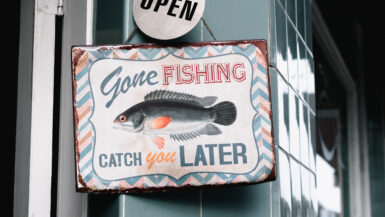When summertime rolls around, you may be tempted to take advantage of the warmer weather and try your hand at fishing. Freshwater fish are a delicious and nutritious addition to any meal, but cooking them to perfection can be a challenge. Luckily, with these tips and recipes, you’ll learn how to clean and cook freshwater fish like a pro. From preparing your fish for cooking to creating unique and delicious recipes, we’ll cover everything you need to know about turning your catch into a meal the whole family will enjoy.
The Basics of Cleaning and Cooking Freshwater Fish
Cooking freshwater fish is a rewarding endeavor that can provide delicious meals without breaking the bank. However, before you start cooking, you need to properly clean and prepare the fish. Here are some tips to help you get started on your freshwater fish cleaning and cooking adventure.
Scaling & Gutting the Fish
The first step to cleaning freshwater fish is to scale them. This can be done using a fish scaling tool or the back of a knife. Then, it is time to gut the fish. It is important to remove the blood and innards as they can produce a bitter flavor if cooked. Start at the fish’s head and use a sharp knife to cut open the side of the belly. Carefully remove the internal organs and any remaining scales, then rinse the cavity in cold running water.
Butterflying the Fish
To butterfly a fish, start by making an incision through the back, near the tail area, and cutting along the backbone up to the head. Then, use a spoon to scrape the bones from both sides of the fish, removing all of the flesh from the backbone. This will leave you with two butterfly-shaped pieces of the fish.
Breading and Frying Freshwater Fish
One of the most popular ways to cook freshwater fish is to coat them in flour or another type of breading and fry them. Add enough oil to a skillet to cover the bottom, then allow the oil to heat up. Once the oil is hot, coat each side of the freshwater fish in the flour, tap off any excess, and place the fish in the pan. Fry each side until golden brown, flipping the fish over halfway through the cooking time.
Baking Freshwater Fish
Baking is a healthier option that still results in a delicious meal. Preheat the oven and grease an oven-safe dish. Place the freshwater fish on the pan, season it with herbs and spices, and top it with a pat of butter. Bake for about 20 minutes, or until the flesh is opaque and flakes easily with a fork.
Cleaning and cooking freshwater fish is simple enough for home cooks to master. With the help of these tips, you can now have a delicious meal on the table in no time.
Essential Tools and Supplies
If you’re planning on cooking freshwater fish, then you’ll need some essential tools and supplies. First off, you’ll need a good knife for scaling and gutting the fish. A quality filleting knife is ideal for this task, as its thin, flexible blade allows you to easily remove the scales and guts. You’ll also need kitchen shears for cutting off the fish’s head, fins, and tail. Additionally, a sharp pair of kitchen scissors will come in handy when removing the skin and filleting the fish.
Marinating and Baking Needed
When cooking freshwater fish, you’ll need some essential equipment for marinating and baking. One of the most important supplies is a baking dish with a lid. This will help ensure even baking and help keep the fish’s juices sealed in. Additionally, having a wide range of marinades on hand will give you plenty of flavor options when cooking. You’ll also want to make sure to have enough brine or marinade to completely submerge the fish.
Cooking and Serving Tools
In addition to the essential tools for preparing freshwater fish, you’ll need some tools for cooking and serving. For cooking, have a high-quality nonstick skillet and a few different cooking utensils, such as a spatula, tongs, and an oven mitt. Having these items on hand will make the cooking process a lot easier. Lastly, serving utensils such as a serving platter and a fish fork are needed to properly present your freshly cooked fish.
Cleaning Materials
Before you begin cooking freshwater fish, it’s essential to have the right cleaning materials. Having a scrubbing brush and a scraping tool will make it easy to remove any scales and debris that might be present. You’ll also want to have a quality sponge on hand to wipe down the fish and remove any remaining grit. Additionally, having a set of food-safe gloves can be very useful when cleaning and handling the fish.
The Process of Cleaning and Filleting
When preparing freshwater fish for cleaning, be sure to use a sharp knife or fishing shears and wear a pair of rubber gloves. This will help to prevent accidental cuts or bacteria transfer. Additionally, it’s important to wear an apron or other protective clothing to prevent staining your clothing.
Gutting and Removing the Scales
Once you have your freshwater fish prepared, it’s time to gut and scale it. First use your knife or fishing shears to make a cut from the anus to the gills of the fish. Reach inside the fish and remove its inner organs. After you have removed the guts, you’ll need to remove the scales. To do this, hold the fish firmly and scrape the scales off in a downward motion using a knife or spoon.
Removing the Heads and Fins
Once the fish is gutted and scaled, the next step is to remove the heads and fins. To remove the head, use a knife to make a cut just behind the gills and cut through the spine until the head is separated. After the head is removed, you can then remove the fins by using a pair of sharp scissors to cut them off.
Cleaning the Fish
After the fins and head are removed, the next step is to clean the fish. To do this, rinse the fish with cold running water for several minutes until all of the blood and other debris is removed. Then use a stiff-bristle brush to scrub away any remaining scales.
Filleting the Fish
Filleting a freshwater fish is the final step in cleaning and preparing the fish for cooking. To do this, place the fish on a cutting board, and begin by making a long, shallow cut from the tail to the head. Then, turn the knife and make another cut, starting at the backbone and extending to the tail end. Once the initial cut has been made, you can then trim off any remaining flesh. Finally, turn the fish over and repeat the same process on the other side.
Cooking Your Freshwater Fish
Once you have finished filleting the fish, you are ready to cook it! There are many delicious recipes you can make with freshwater fish, such as baked, fried, grilled, or steamed. Whichever way you choose to cook it, your fresh, delicious freshwater fish is sure to be a hit!
Recommended Recipes for Freshwater Fish
Cooking up a delicious freshwater fish meal is easy with the right preparation. Before you get into the kitchen, you’ll want to clean and gut the fish. You can do this yourself or purchase already cleaned fish from the store. Once the fish is cleaned, you’ll need to decide which seasonings to use, determine how long to cook the fish and which cooking method to choose.
How to Season Freshwater Fish
When seasoning your freshwater fish, it’s important to consider the type of fish you have and what you plan to do with it. If you’re grilling a white fish such as walleye, you may want to use a mild seasoning such as lemon pepper, while a bold fish like trout could pair well with a simple parsley and garlic rub. For those fish that are just going to be pan-fried, a simple salt and pepper mixture may be enough.
Cooking Methods for Freshwater Fish
One of the most popular methods for cooking freshwater fish is pan-frying, as it’s simple and fast. To pan-fry fish, you’ll need to season it, then heat some oil and butter in a skillet. Once the skillet is hot, place the fish in the pan and cook it on both sides, creating a golden-brown crust. If you prefer to grill your fish, preheat the grill to medium heat and place the fish on the pre-oiled grates. Grill the fish for 5 to 7 minutes on each side, making sure to flip it midway through.
Recommended Recipes for Freshwater Fish
When it comes to cooking freshwater fish, the possibilities are endless. Here are a few recommended recipes to get you started:
- Crispy Pan-Fried Trout – Perfect for a quick weeknight meal, this recipe calls for trout fillets to be seasoned with garlic powder, salt, and pepper, then pan-fried in a generous amount of butter. It’s finished off with a sprinkle of fresh parsley.
- Grilled Walleye with Lemon Butter Sauce – This recipe makes use of a simple lemon butter sauce to enhance the flavor of the walleye. To make the sauce, combine melted butter, lemon juice, and garlic in a small bowl and brush it over the fish before and after grilling.
- Crispy Baked Catfish – This simple catfish recipe calls for the fish to be seasoned with a blend of herbs and spices, then baked on a sheet pan in the oven. The result is a crispy, golden-brown catfish that pairs well with rice or a side salad.
Frequently Asked Questions About Freshwater Fish
If you’re still unsure about how to clean and cook freshwater fish, here are some of the most common questions you may have:
- Do I need to gut the fish before cooking? – Generally, yes. Unless you’ve purchased already-gutted fish, you’ll need to gut the fish before cooking.
- What’s the best way to cook freshwater fish? – The best way to cook freshwater fish depends on the type of fish you’re dealing with. For white fish like walleye or trout, you may want to try pan-frying or grilling. For other fish like catfish, baking or poaching may be best.
- Is freshwater fish healthy to eat? – Yes! Freshwater fish is a great source of lean protein and essential vitamins and minerals. Just make sure to take the proper steps when it comes to cleaning and cooking the fish.
A Delicious Way to Enjoy Freshwater Fish
Cooking and cleaning freshwater fish can be an enjoyable experience, as long as you follow the necessary steps in the process. Before you begin to cook, it is important to make sure that you have the right tools, such as a sharp knife and a cutting board. After you have prepped the fish for cooking, you can choose from a variety of recipes, such as pan-fried, grilled, or baked. As long as you follow the guidelines provided in this article, you can enjoy a delicious and healthy meal using freshly caught freshwater fish.





Leave a reply